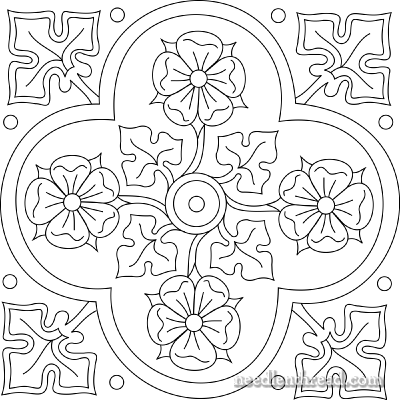Here we are, in the Year of Our Pandemic 2022, and things are a bit of a mess. Still, we're learning and sewing more all the time.
So let's take a look at what projects are currently on the work bench. First there's the Subtle Dress. This is a very thin cotton in what I mentally have dubbed SCA Period-oid style, Ye Olde Faire Clothes if you will. The silhouette is sort of generally 15th century Florentine and I suspect that's what I'll accessorize it towards.
Clearly, the reason it's subtle is the delicate print. You'd hardly even notice the HUGE WHOPPING BIRD on it. I got the fabric from Cok Guzel over on etsy and it's totally worth it.
The gown itself is based loosely on Jen Thompson's 1480's Florentine Gown, but not closely enough you'd see the resemblance I think. Her write-up is great though.I really want to do more of these just for the experience, but the dress diaries do lure me down so many rabbit holes.
The next thing that's been taking up space in my brain is a piece I'd like to enter into a competition, assuming it ever gets finished. I'm making a 10th Century Norse linen underdress for a woman. It is saffron-colored ( modern dyes are MUCH cheaper thanks), and hand-sewn on all the seams. I'm using a very tiny running back stitch where I take about three stitches onto my needle at once, pull through, and then do a small back stitch to anchor it. Then, once the seams are done, I'll go back over them and finish them using a whipstitch on folded over seam allowances.
I could opt to flatten the seams and use a thread of wool to whipstitch in a filler thread, but my test piece itched me pretty badly. I think that technique will need to wait for an over garment.
Many of the techniques I'm trying are documented in Woven Into the Earth by Else Ostergaard and in Medieval Garments Reconstucted by Anna Norgard and Lilli Fransen, as mentioned by Morgan Donner in the Sexy Potato video. Both of these books are on my personal wish list and I've been reduced to borrowing them to read furiously before returning them to their owners. I've also used the website Needlework in the Viking Age for some good reminders.
One of the items of frustration and then moments of inspiration that occurred during this build was based entirely on bad math. My brain had read (somewhere) that period looms tend to max out on weaving width about 22 inches (55cm) wide. So I cut my rectangles on that assumption and started stitching away. After I'd done one arm and a very nice neck hole all the way, I saw a video by the accomplished Opus Elenae that reminded me not to finish the seams totally until the garment is done. This helps keep the stress on the seams balanced, so they don't wind up pulling in odd directions. It's a good thing I didn't finish them all the way. Pulling the partially sewn garment on to make sure I had the side gores in the right spot showed me that there was no possible way this thing would fit me. There was a fair amount of swearing and some hasty re-mathing.
After a sulk I had some time to think. IF a loom was 22 in wide, then there was no way I could cut a width wider then that and neither could anyone in period. I realized I've NEVER seen documentation on that loom width in a book, but if it occurred then piecing was the only reasonable option. So, the sleeves came off this morning and I'm going to add extra thin rectangles of material down the sides to extend it. The sleeves themselves fit just fine, but the tightness of the chest and back made the gown much too short. I'm hopeful that little quirk will be worked out when I get the extra piecing added.It occurs to me that will lengthen the arms a bit, so there will be nice deep cuffs to add weight. Perhaps they need some embroidery?
The other thing that I've been working away on trying to work my way up to goldwork embroidery. I've done some goldwork and silverwork in the past ( the difference is the materials, not the techniques)and I know I want to practice before I spend so much money. One of my worst problems is I've never properly dressed a frame or hoop and my fabric tends to be horribly droopy and sloppy. I've also not had a lot of practice with laying tools ( I don't own any). Here's a guide to laying tools that I drool over sometimes. I don't want to buy a bunch of silks to work with and then find out I can't use them, so I'm started working my way through some tutorials. I downloaded a Tudor Rose Roundel pattern from NeedlenThread.com and I'm slowly filling it in with chain, stem, and satin stitch. It's been in progress for over 2 years now, but so has the rest of the world.
I hope the world is bright on your end and you always know where your seam ripper is currently.




No comments:
Post a Comment